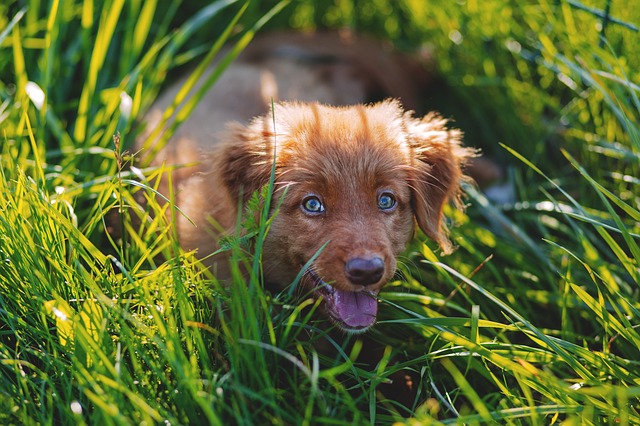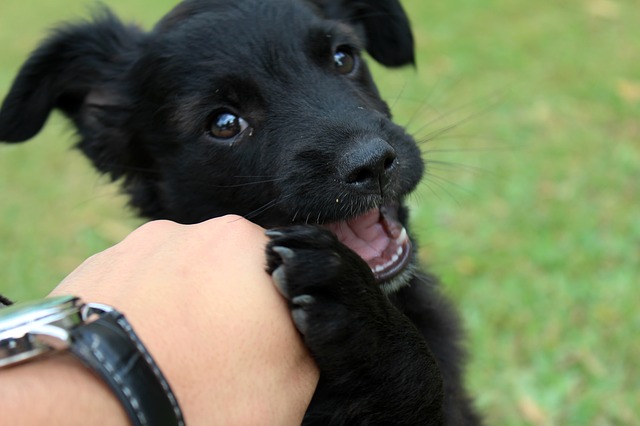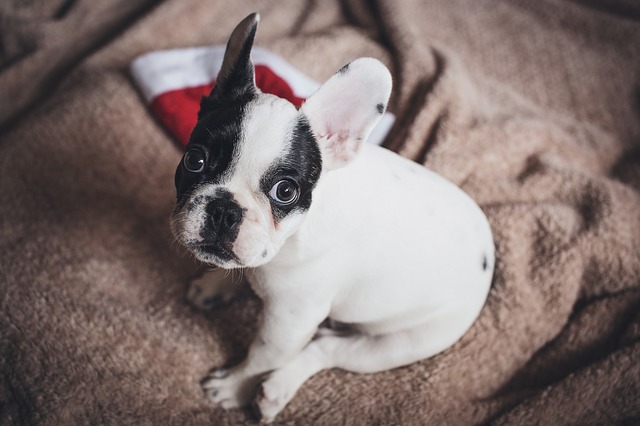You fell in love with a cute bundle of fur and brought it home. Her big brown eyes and sloppy tongue pretty much guarantee that you will give in to her every whim. But soon those behaviors you found irritatingly cute are now just irritating, and the new habits she’s forming are less than ideal. This could be your future, if you make these common new dog owner mistakes. Avoid them, and you will be well on your way to having a nicely behaved canine that truly is a joy to be around.

1. Going off Cute.
If you ask someone why they chose their new dog, 9 times out 10, they will say something about the way it looks. However, dogs are not just cute faces, they have personality traits and exercise needs that typically go along with their breed, and a smart dog owner chooses their dog based on these factors, not looks.
For example, a busy businessperson who lives in a New York high rise, is only home a few hours, and does not like to go for walks or runs should not own a Siberian Husky, a breed that needs to run miles a day. Choose wisely, and you will already be on the road to success before you even bring your dog home. If this is your first dog, check out our article on the 15 Dog Breeds That Are Best For New Owners.
2. Thinking “what you see is what you get.”
Often people go to the shelter or pick out a puppy, assuming the personality they see right there and then is the dog they will have for life. However, puppies go through fear periods, hormone changes, and environmental experiences that will determine her personality as an adult. Rescue dogs are usually in a state of fear or depression, having been abandoned or abused by owners, living on the streets, etc. This means the disposition they are showing you at the shelter or foster parent’s home is probably not the personality he will have after a month of living at your house. Once he settles in and gets comfortable, be prepared to see his true colors.
Making the mistake of assuming the dog is going to be a calm, quiet dog because he was shy and reserved when you first met can set you up for disappointment and frustration when he gets comfortable and starts bouncing off the walls.
With a puppy, look to the parents and ask the breeder about temperaments of past litters to get an idea of what the puppy might be like as an adult. With a rescue dog, get as much information as you can and pay attention to the breed or breeds the dog is, that can help you determine personality too.

3. No House Rules.
Often we bring a dog home, unhook the leash, and set it “free” without any thought about what we want him to do or not to do. Then when he starts doing things we decide are bad, we try to punish him for not reading our minds. Sometimes we allow him to do something for a couple weeks and then change the rules and decide we don’t want him to do it anymore. This creates confusion and sets the dog up for failure, not success. Before you bring a new dog or puppy into the house, sit down with members of the household and decide what the dog will and will not be allowed to do. Choose where the dog will sleep, if it can be on the furniture, when it will be fed, walked, exercised and by whom. Setting the rules and making sure everyone follows them is a big key to success.
4. Inconsistency.
Once your rules are set – FOLLOW THEM! This means everyone who has frequent contact with your new dog, whether it is friends, family members, or the housekeeper. Dogs are smart creatures and if just one person is rewarding them, say for jumping up, they will continue that behavior much to the chagrin of everyone else. Hold the humans accountable and your dog will learn.

5. Believing “baby” is Too Young to Train.
New puppy owners often ask when they can start training things like loose leash walking, sit, etc. They often remark about the puppy being “too young” too learn. By the time you get your pup at 8 weeks, they are fully capable of learning behaviors and should be from the moment they set foot in your house. Not only does positive reinforcement training strengthen your bond, it will lead to a well behaved dog. See our breed-specific articles for tips on training your pup.
6. Believing She’ll Grow out of It.
Another remark heard by many dog owners is the “I can’t wait till he grows out of it.” However, generally speaking, dogs do not grow out of bad behaviors. In fact, left to their own devices they will get worse. Remember, these behaviors are only considered bad by us – your dog is self-rewarded by digging up the flowers, chasing the cat, and barking at the mailman. He’s not going to stop unless you give him a reason to through reinforcement.

7. Getting Away with it.
Cute goes a long way with humans. We tend to let cute things get away with practically anything. New dog owners think their tiny puppy trying to jump on them for attention is just adorable, and that little howl she makes when she is left alone is just too sad to ignore.
However, when your 80-pound lab jumps up on your 90 year-old grandma, it won’t be so cute. And the sympathy will stop when your adult Husky howls all night while you try to sleep. Keep in mind how big your dog will be and whether or not you want those behaviors to continue past puppyhood. If not, do not let them continue now.
8. No Socialization.
Just because you bring home a golden retriever, does not mean she is going to love everyone and every dog she comes in contact with. New dog owners often assume that dogs are just friendly by nature and so they do not give much thought to socializing their dog.
Socializing a dog just may be the single, most important thing a new owner can do, especially with a puppy. Puppies have a socialization window that starts before you even get them, and ends around 12-16 weeks. During this time, the more positive experiences your dog has with other dogs (small, large, short hair, long hair) and people (old, young, with hats, beards, in wheelchairs, etc) the more friendly your dog is likely to become.

9. No Management.
Stories abound about what new dogs devour after being brought home. High heel shoes, expensive designer purses, iPhones, dry wall, you name it, it’s probably been eaten by a dog somewhere. This is a trap a lot of new owners fall into because they just assume there new dog or puppy will leave things alone and not chew on anything except those dozens of toys strewn all over the house. Your new family member does not know the difference between a squeaky toy and a Prada bag, nor can he learn without help, and learning takes time. Meanwhile, manage your new dog by not leaving things out for him to chew, keeping watch on him while he is loose, and confining him in a safe place when you cannot. If you leave your new shoes and your puppy alone, the end result is your fault, not the dog’s. Stock up on bully sticks, tooth-cleaning toys, and other good-to-chew things for your pup.
10. Not Recognizing Fear.
New dog owners commonly refer to their dogs as being stubborn. They’ll say their dog won’t walk with them outside, doesn’t want to greet other dogs, or won’t respond to cues in public places. However, in a lot of these cases, the puppies or dogs are not being “stubborn” (a human trait we give to dogs), but are actually anxious or fearful of the situation they have been put in. Not being able to recognize when your dog is fearful is a big mistake that can be costly.
If you are pushing your dog to do something and he is afraid, he could end up biting you or another dog or person. When your dog starts showing signs of fear or anxiety, back off! Do not force them into the situation further. Seek out a professional trainer to help you learn how to manage your dog in these situations, which will make him more comfortable and you more at ease. See this article on Fear Aggression in Dogs and How To Help.
Develop a plan, pick your dog carefully, follow through with rules, manage until she has learned the rules, socialize her, and TRAIN, TRAIN, TRAIN! Adhere to these simple rules and you will have a nice dog the whole family can enjoy.
